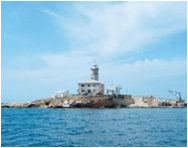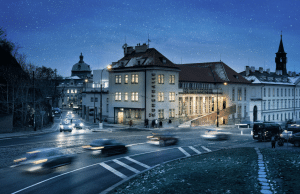In 2001 Mitja Koren brought adrenaline parks to Slovenia by building the first such object in Ljubelj. The idea came from abroad where these parks existed much earlier. Since then he built a total of 14 parks, not just in Slovenia but also in Croatia, Hungary, Austria and Iceland. A number of these parks are introduced further on.
It’s not entirely clear when such parks first appeared in history – the ancient Greeks used similar training grounds for military training. Georges Hébert is mostly mentioned as the father of the modern adrenaline park since building the first such object in 1900 for military purposes in France. Adrenaline parks as we know them started appearing in 1980. These objects differ greatly from military ones since the first concern is the safety of the participants and they can be used by everybody. In principle we know low rope and high rope adrenaline parks. The names are pretty self-explanatory. Low rope parks are mostly aimed at kids, team building programmes and can sometimes be used as a warm-up for the higher part of the park.
Considering I was once a part of building one of these parks and spent a few years as a guide I took the liberty to write this editorial. Many people who face the adrenaline park for the first time wonder "is it safe”? My answer is “of course”, these parks could hold elephants not only tourists. The guides are mostly well educated and come from the world of climbing and other sports where rope techniques are used. So have no fear and bravely venture into one of the parks and test your limits. Everyone can find a challenge since obstacles can be conquered in different ways, limited only by the imagination of the guide and the courage of the visitor.
Adrenaline parks are very common in team building programmes due to their numerous possibilities and safety. The participants are faced with new challenges and issues they are not used to from their everyday life and can be successfully solved only with the help of team work, communication, leadership, cooperation… And that is the aim of all team building programmes – getting to know the advantages of your team through games. It is then the team’s task to transfer these skills into their work environment. What could be better to cure a lack of trust than guiding and protecting each other while jumping from a courage beam? Adrenaline parks are also very useful for solving communication, leadership and organization problems.
Of course, adrenaline parks are principally aimed at visitors wishing to spend an adrenaline filled day. As a guide I saw many pale faces which turned to big smiles after the tasks were successfully finished. Conquering your fear and fulfilling a task is an unforgettable feeling. To all of you who never faced this kind of adrenaline or never before tried a team building programme in an adrenaline park, I suggest you carefully read the next pages presenting the parks from Slovenia and Croatia and conquer your fears.
Jan Klavora













